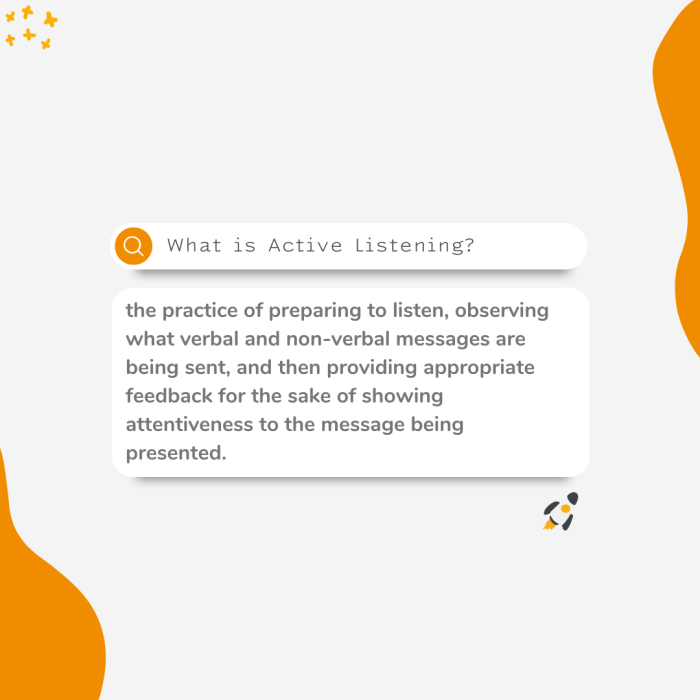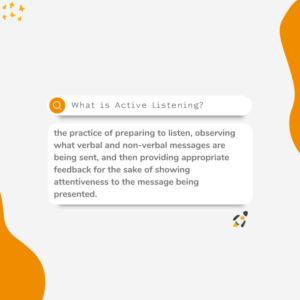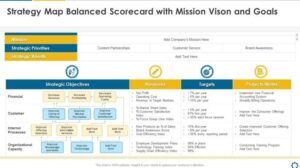
Active listening at work is a powerful tool that transforms workplace interactions, fostering an environment where ideas can thrive. It goes beyond mere hearing; it involves truly engaging with the speaker, validating their thoughts, and responding thoughtfully. This skill not only enhances communication but also strengthens team dynamics, ultimately leading to improved productivity and innovation.
In today’s fast-paced business world, where every voice matters, mastering active listening is essential. It empowers teams to collaborate effectively and navigate challenges with a fresh perspective. By adopting active listening techniques, employees can better understand their colleagues, drive creativity, and contribute to a positive workplace culture.
Importance of Active Listening at Work
Active listening is a crucial skill in the workplace that significantly enhances communication, collaboration, and overall productivity. By fully engaging with colleagues, employees can create a more cohesive work environment that fosters trust and understanding. This skill not only strengthens interpersonal relationships but also contributes to better decision-making and problem-solving.
Enhancing Workplace Communication
Active listening plays a pivotal role in improving communication within teams. It encourages open dialogue, where individuals feel valued and heard. When team members actively listen, they can better understand different perspectives, leading to more effective discussions. The following points highlight the impact of active listening on communication:
- Promotes clarity: By ensuring messages are understood, active listening minimizes misunderstandings.
- Encourages feedback: Team members are more likely to provide constructive feedback when they feel their input is appreciated.
- Fosters inclusivity: Creating an environment where everyone feels comfortable sharing their thoughts leads to diverse ideas and solutions.
Team Building and Collaboration
Active listening is essential for team building as it strengthens bonds between colleagues. By showing genuine interest in what others have to say, team members can build rapport and trust. Additionally, the collaborative process is enhanced when individuals feel connected. Here are some ways active listening contributes to team dynamics:
- Builds trust: When leaders and peers listen actively, it establishes a foundation of trust within the team.
- Encourages participation: Active listening motivates team members to participate more fully, contributing their insights and ideas.
- Facilitates conflict resolution: Listening to all sides of a conflict can help find common ground and resolve issues amicably.
Impact on Business Productivity and Outcomes
The relationship between active listening and business productivity is undeniable. Companies that prioritize listening often see improvements in employee satisfaction and overall performance. Some notable effects include:
- Increased efficiency: When instructions and feedback are clearly communicated, tasks are completed more effectively.
- Higher employee retention: Active listening contributes to a positive workplace culture, reducing turnover rates.
- Improved customer relations: Employees who listen well can better address customer needs, leading to enhanced satisfaction.
Techniques for Improving Active Listening Skills
Improving active listening skills is a continual process that can be enhanced through various techniques. Here are some strategies to practice effective listening during meetings and interactions.
Practicing Active Listening in Meetings
Meetings can be challenging environments for active listening, but there are effective methods to improve engagement:
- Eliminate distractions: Turn off notifications and focus on the speaker to enhance your listening capabilities.
- Use body language: Nodding and maintaining eye contact show the speaker that you are engaged.
- Summarize points: Briefly paraphrasing what the speaker has said demonstrates understanding and reinforces the message.
Enhancing Focus and Attention
Maintaining focus while listening can be difficult, especially in fast-paced work environments. Implementing these tips can help improve attention:
- Practice mindfulness: Take a moment to clear your mind of distractions before engaging in conversation.
- Limit multitasking: Concentrate on the discussion at hand instead of juggling multiple tasks simultaneously.
- Take notes: Writing down key points can help reinforce what you are hearing and improve retention.
Asking Clarifying Questions
Asking questions is a vital aspect of active listening. Clarifying questions not only show engagement but also ensure accurate understanding:
- Restate for clarity: “So what you’re saying is…” can help confirm your understanding of the speaker’s message.
- Inquire for details: Questions like “Can you elaborate on that?” can deepen the conversation and reveal more insights.
- Encourage vulnerability: Phrasing questions thoughtfully can create an environment where speakers feel safe sharing more.
Active Listening in Business Innovation
Active listening is a driving force behind creativity and innovation within teams. By fostering an environment where ideas are shared and valued, organizations can unlock new opportunities for growth.
Fueling Creativity and Innovation
Creativity thrives in environments where individuals feel heard and appreciated. Active listening helps cultivate such environments:
- Encourages diverse viewpoints: Listening to various perspectives allows for a range of ideas to emerge.
- Stimulates brainstorming: When people feel secure sharing their thoughts, they are more likely to contribute innovative ideas.
- Enhances collaboration: Teams that actively listen can build on each other’s ideas, leading to more refined outcomes.
Successful Problem-Solving
Active listening is intricately linked to effective problem-solving. When challenges arise, teams that embrace listening are often better equipped to find solutions:
- Identifies root causes: By listening to all perspectives, teams can uncover the underlying issues contributing to problems.
- Facilitates collaboration: Active listening encourages teamwork, allowing members to work together to devise solutions.
- Promotes adaptability: Teams that listen well can pivot and adjust their strategies based on feedback and insights.
Examples of Successful Businesses
Several companies have thrived by fostering a culture of active listening. For instance:
- Google emphasizes open communication, allowing employees to voice ideas and suggestions, leading to innovative products.
- Apple encourages feedback through regular team meetings, which has resulted in enhancements to both products and internal processes.
- Salesforce invests in active listening training, fostering collaboration and employee engagement that drives success.
Role of Active Listening in International Business
In international business, active listening becomes even more essential due to cultural differences. Understanding how to navigate these nuances is key to successful global interactions.
Cultural Differences in Listening Styles

Different cultures exhibit varying listening styles, which can impact communication. Awareness of these differences can lead to more effective interactions:
- Contextual variations: Some cultures prefer indirect communication, while others value straightforwardness.
- Engagement levels: In some cultures, listening may be more passive, whereas others might expect more vocal feedback.
- Nonverbal cues: Understanding the significance of body language in different cultures enhances the listening process.
Strategies for Active Listening in Cross-Cultural Communication

Implementing effective strategies for active listening in cross-cultural settings can facilitate smoother communication:
- Be culturally sensitive: Understand the cultural backgrounds of your colleagues to better interpret their communication styles.
- Adapt your approach: Tailor your listening techniques to align with the cultural preferences of your audience.
- Encourage open dialogue: Foster an environment where team members feel comfortable sharing their cultural perspectives.
Overcoming Language Barriers Through Listening
Active listening can also help bridge language barriers in international business:
- Use simple language: Speak clearly and avoid jargon to facilitate understanding.
- Paraphrase frequently: Restate key points to ensure comprehension and check for clarity.
- Utilize translation tools: In diverse teams, leveraging technology can assist in conveying messages effectively.
Active Listening during Business Interviews
Active listening is vital during business interviews, affecting both interviewers and candidates. This skill can significantly influence the outcomes of hiring processes.
Significance for Interviewers and Candidates
For both parties involved, active listening can shape the interview experience:
- Builds rapport: Candidates who feel heard are more likely to connect positively with interviewers.
- Enhances evaluation: Interviewers who listen effectively can assess candidates’ responses more accurately.
- Encourages openness: A listening-focused approach fosters a relaxed atmosphere, promoting candid discussions.
Influence on Hiring Decisions
The ability to listen attentively can sway hiring decisions significantly:
- Identifies fit: Active listening helps interviewers gauge cultural and team fit through candidate responses.
- Uncovers strengths: Listening carefully allows interviewers to recognize qualities and skills that might not be immediately apparent.
- Facilitates informed choices: Comprehensive understanding leads to better decision-making during the hiring process.
Framework for Practicing Active Listening in Interviews
Employing active listening techniques can enhance the effectiveness of interviews:
- Prepare with questions: Have specific questions ready, but stay flexible to adapt based on candidate responses.
- Practice reflective listening: Summarizing candidate responses can help clarify and reinforce understanding.
- Provide feedback: Engage with candidates by acknowledging their points and asking follow-up questions.
Last Word
In conclusion, active listening at work is not just a communication skill; it is a foundational element that supports teamwork, innovation, and success. By prioritizing this practice, organizations can enhance relationships, boost morale, and achieve remarkable outcomes. Embracing active listening can pave the way for a more engaged and productive workforce, ultimately benefiting everyone involved.
General Inquiries
What is active listening?
Active listening is the practice of fully concentrating, understanding, and responding thoughtfully to a speaker, rather than just passively hearing their words.
How can I improve my active listening skills?
You can enhance your active listening skills by practicing mindfulness, maintaining eye contact, summarizing what the speaker has said, and asking clarifying questions.
Why is active listening important in the workplace?
Active listening is crucial in the workplace as it promotes effective communication, strengthens relationships, and helps in resolving conflicts efficiently.
Can active listening impact employee satisfaction?
Yes, active listening can significantly improve employee satisfaction by making individuals feel heard and valued, which fosters a positive work environment.
Is active listening beneficial for remote teams?
Absolutely! Active listening is essential for remote teams as it helps bridge communication gaps and ensures that everyone feels connected and understood, even from a distance.




